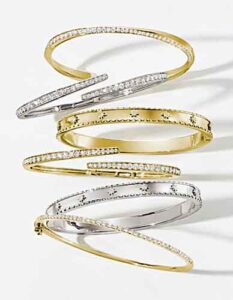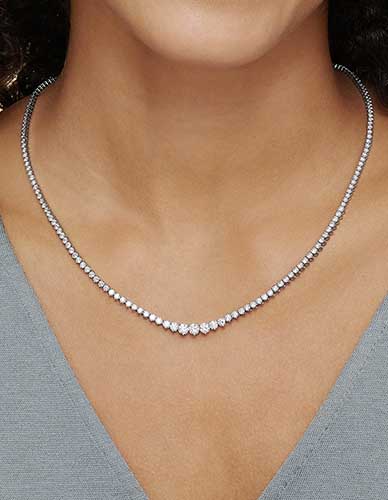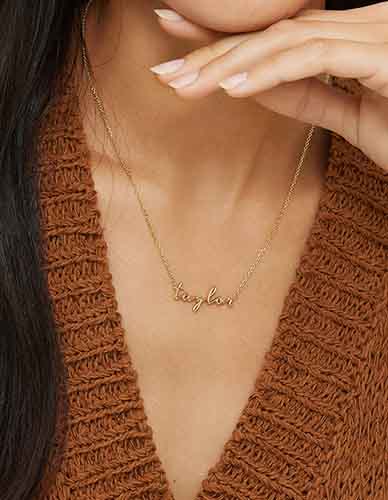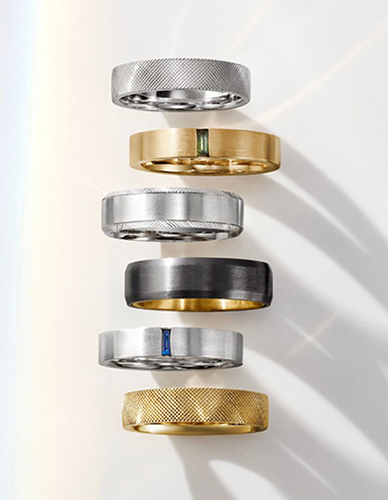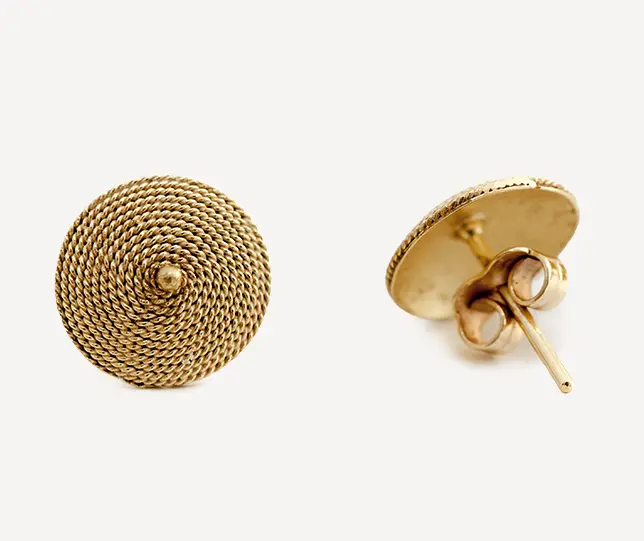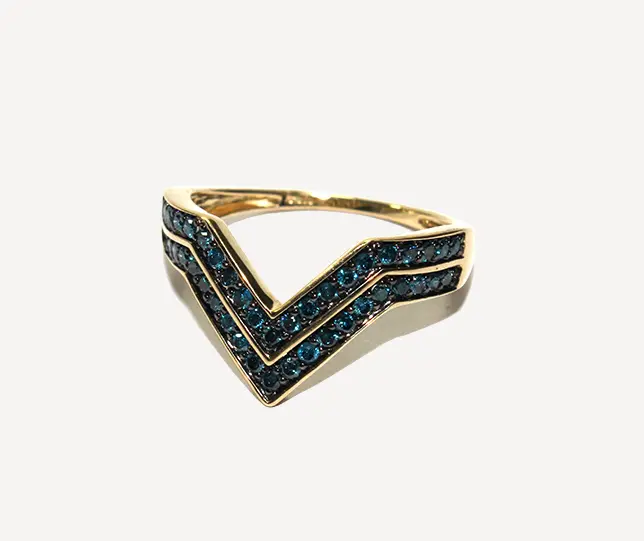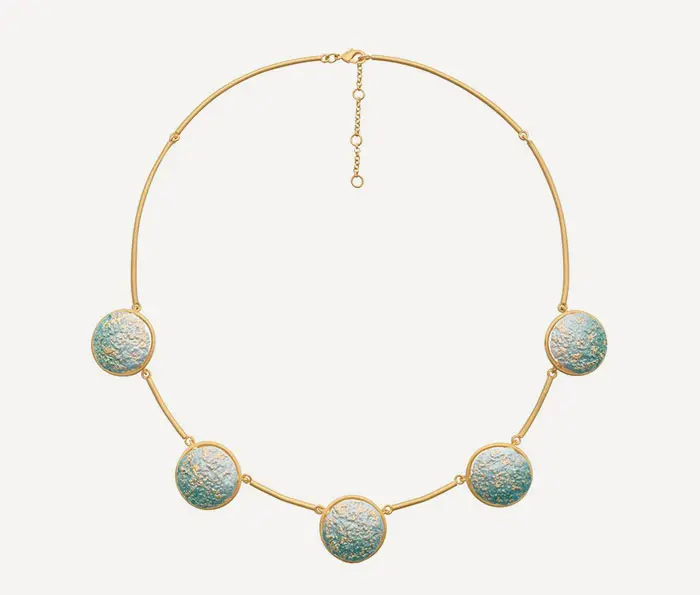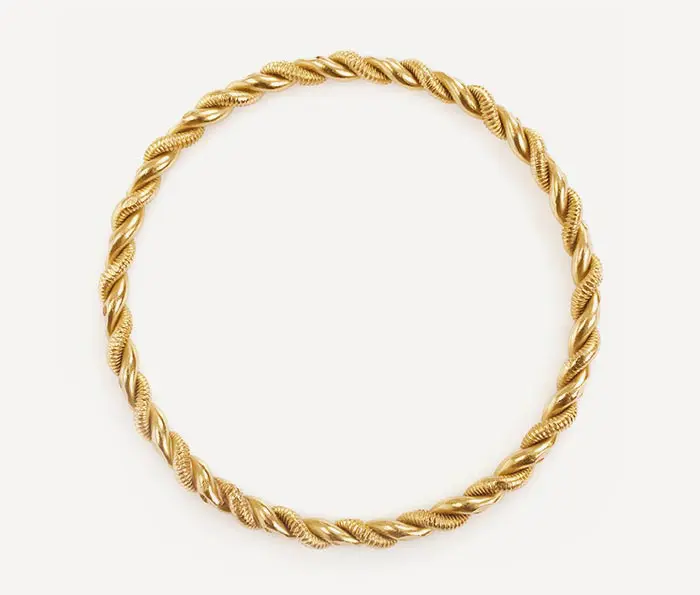Sapphire Color
Explore sapphire's rainbow of colors and discover the details of hue, saturation, and tone.
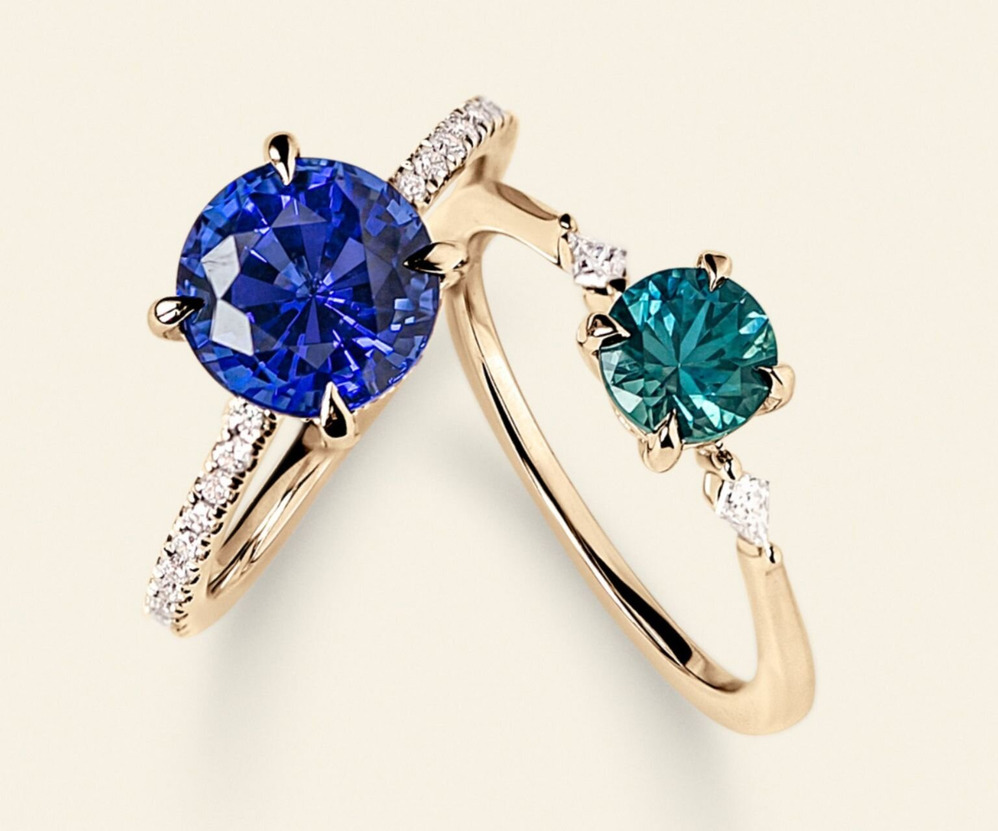
Sapphire Color
Explore sapphire’s rainbow of colors and discover the details of hue, saturation, and tone.
What Color is Sapphire?
When you first think of a sapphire, it’s likely blue that comes to mind — but sapphires actually come in a rainbow of colors, from green to yellow to pink and just about everything in between. Some sapphires exhibit more than one color at once or change their colors under different lighting.
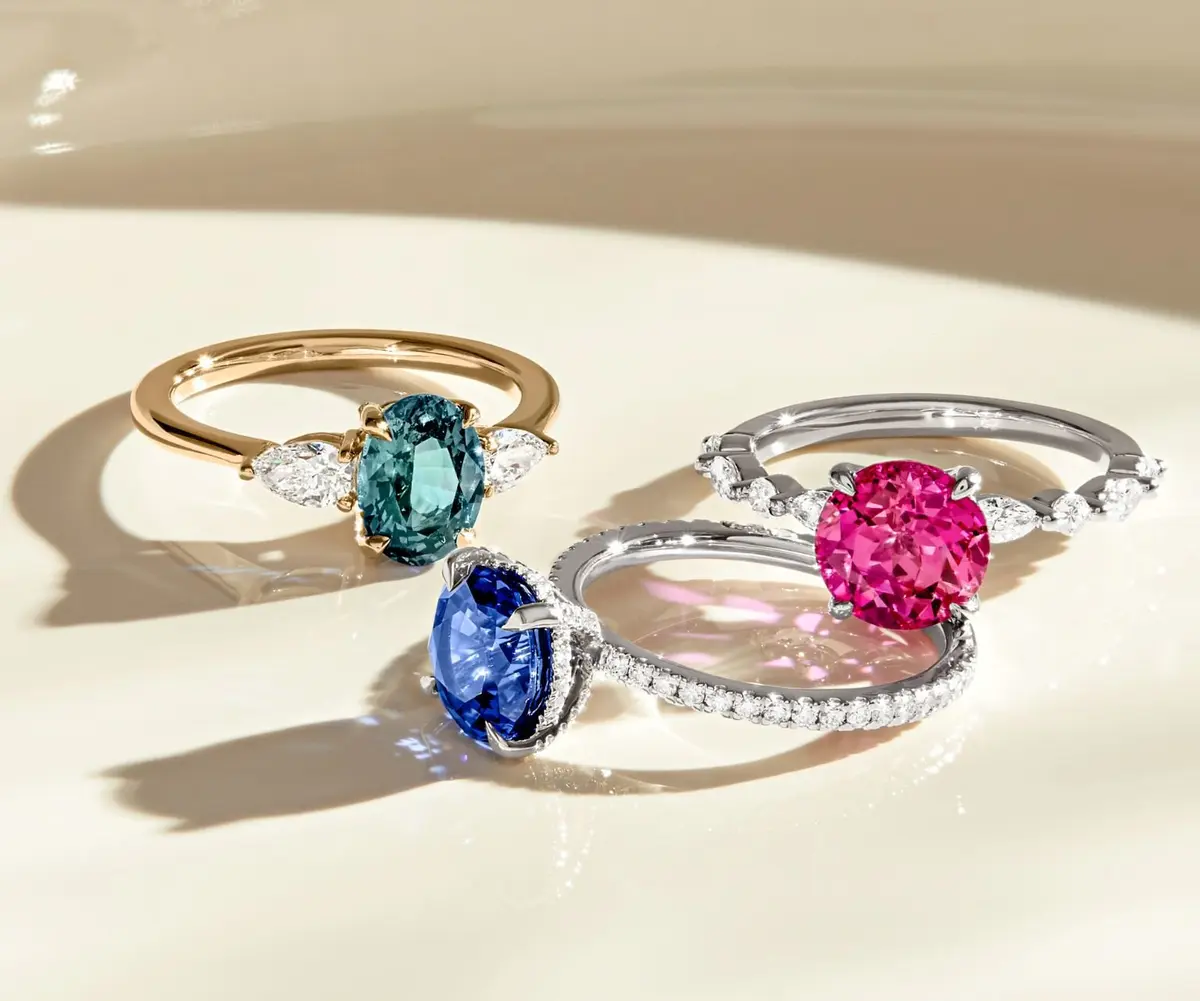
Hue
Hue refers to the actual color of a sapphire, whether it’s a singular, primary color, or multiple colors present within the stone. For example, it is possible to have sapphires that are greenish-blue, violet-blue, or violet-pink. When describing a sapphire, the secondary color is listed first, and the primary color is listed second. In the greenish-blue example, blue is the primary color, and greenish is the secondary color — meaning it’s mostly blue with a greenish tint.
Tone
Tone refers to lightness or darkness within a sapphire. While two sapphires may have the same hue, they can have differing tones — for example, one sapphire may be a very light blue, and another may be a deep blue. Both are blue, but the difference between the two is their tone.
Saturation
Saturation refers to the intensity of a sapphire’s color. Sapphires with the highest saturations feature a pure color with minimal to no impurities — these are called “vivid” stones. The other saturation grades are strong, medium, fair, and weak. Saturation can be one of the most significant influences on sapphire’s value, with preferred stones featuring strong to vivid saturation.
Sapphire Colors
Blue
Blue is the most well-known and common sapphire color. Blue sapphires can range from light blue to deep blue and get their color from trace elements of iron and titanium. They are incredibly popular in all types of jewelry, from wedding bands to tennis bracelets and beyond. Sapphires with a medium-dark tone, a true-blue color, and a vivid saturation are typically the most valuable.
Pink
Pink sapphires range in color from pale pink to deep pink (often called magenta) and can include secondary colors such as purple or orange. A pink sapphire with a richer saturation can be difficult to differentiate from a ruby, which features different trace elements within corundum than any other sapphire color.
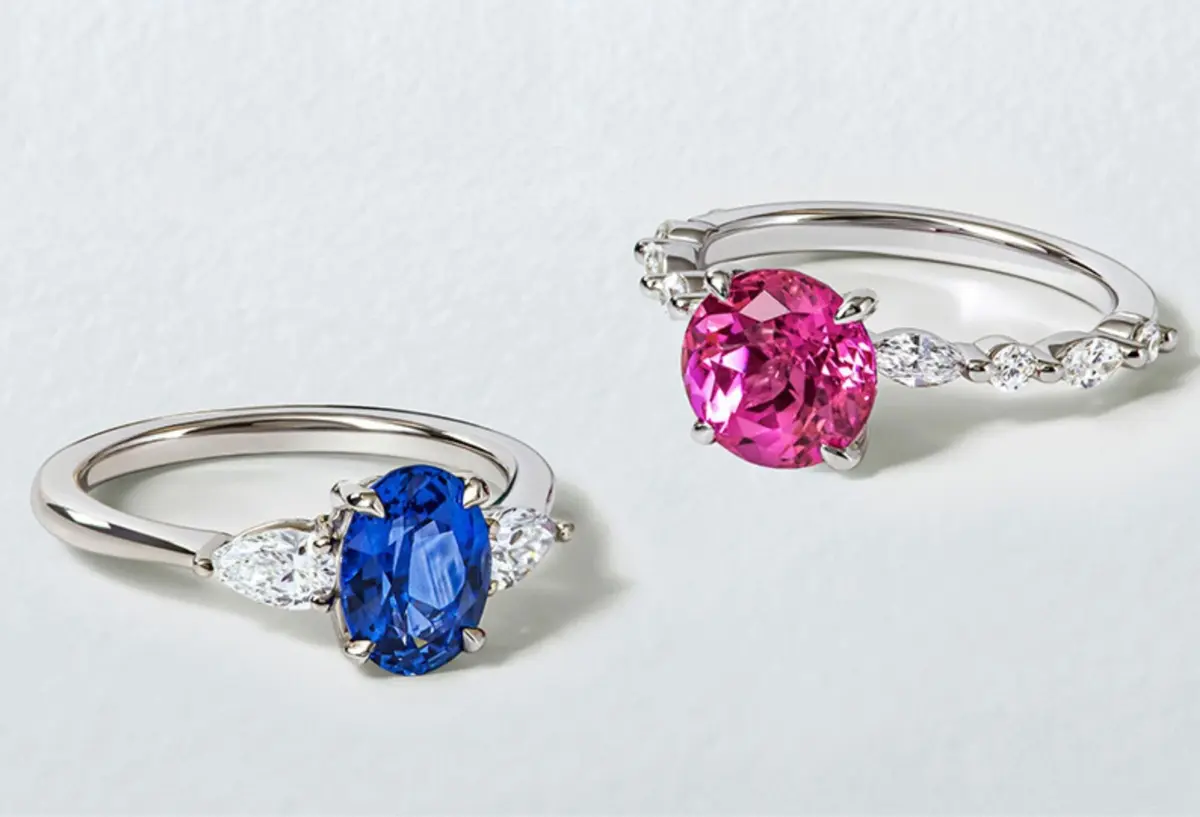
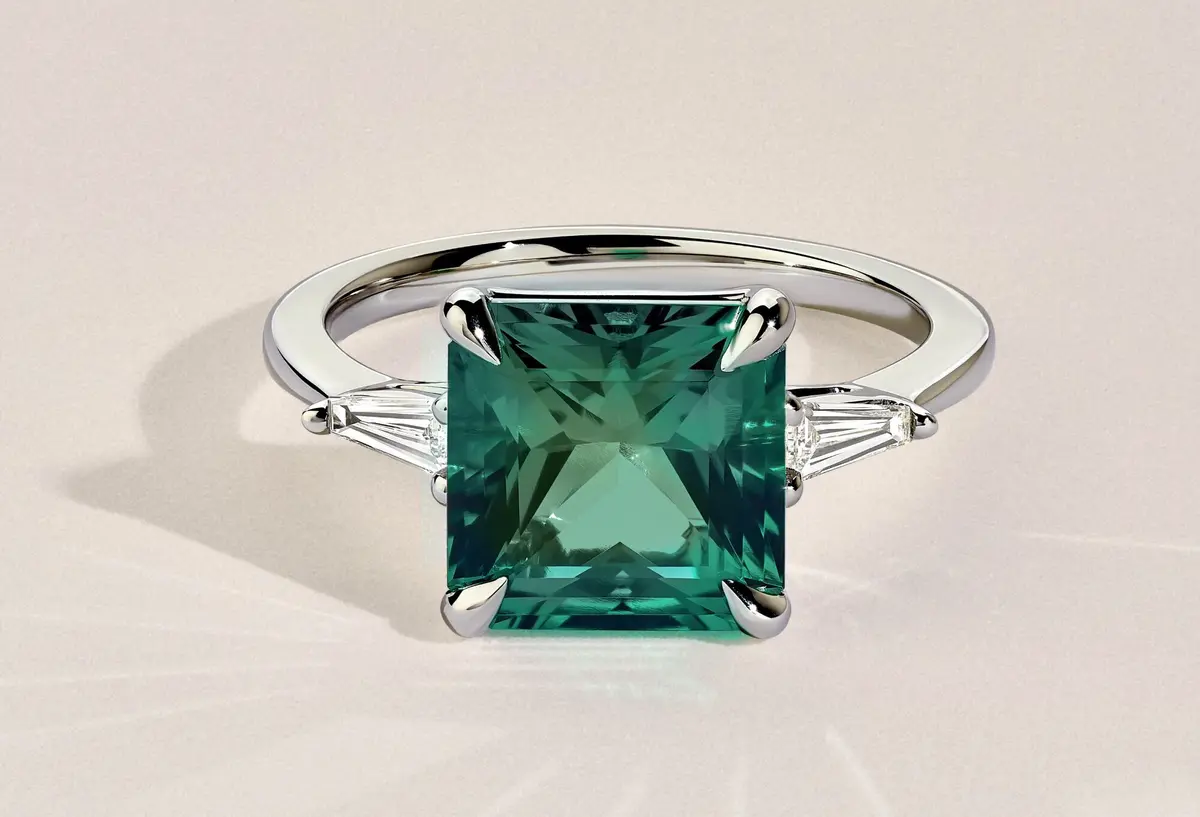
Green
Green sapphires feature a unique range of colors, from a very soft, light green to a bold, deep green that can be similar to an emerald. They get their beautiful green color from trace elements of iron. Though the most coveted green sapphires are pure green, they can often feature secondary colors such as blue or yellow.
Teal
Teal sapphires feature a stunning blend of green and blue. Their variations can range from an equal split of 50% blue and green to 15% green and 85% blue. The most coveted teal sapphires are generally the equal split between blue and green, as this ratio produces a classic and quite beautiful teal.
White
Though white sapphires are often set in jewelry as diamond alternative, they are quite distinct from diamonds and other gemstones like moissanite. They are from the same corundum family as other sapphires and while they may appear colorless, they feature much less brilliance and fire than a diamond.
Yellow
Yellow sapphires range in color from very light to an intense, orange yellow and can look similar to yellow-colored diamonds. Beyond the classic blue, bright canary yellow sapphires are one of the most popular colors for engagement rings and other fine jewelry such as earrings or necklaces.
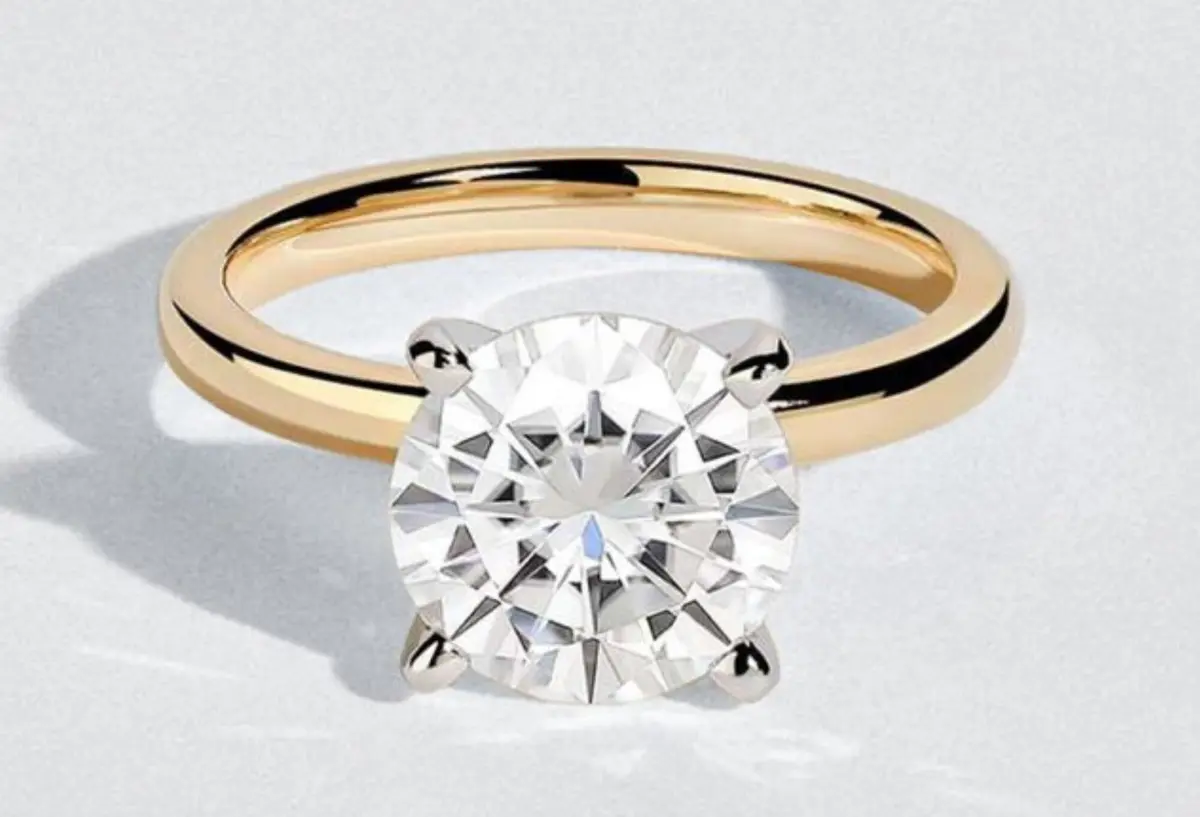
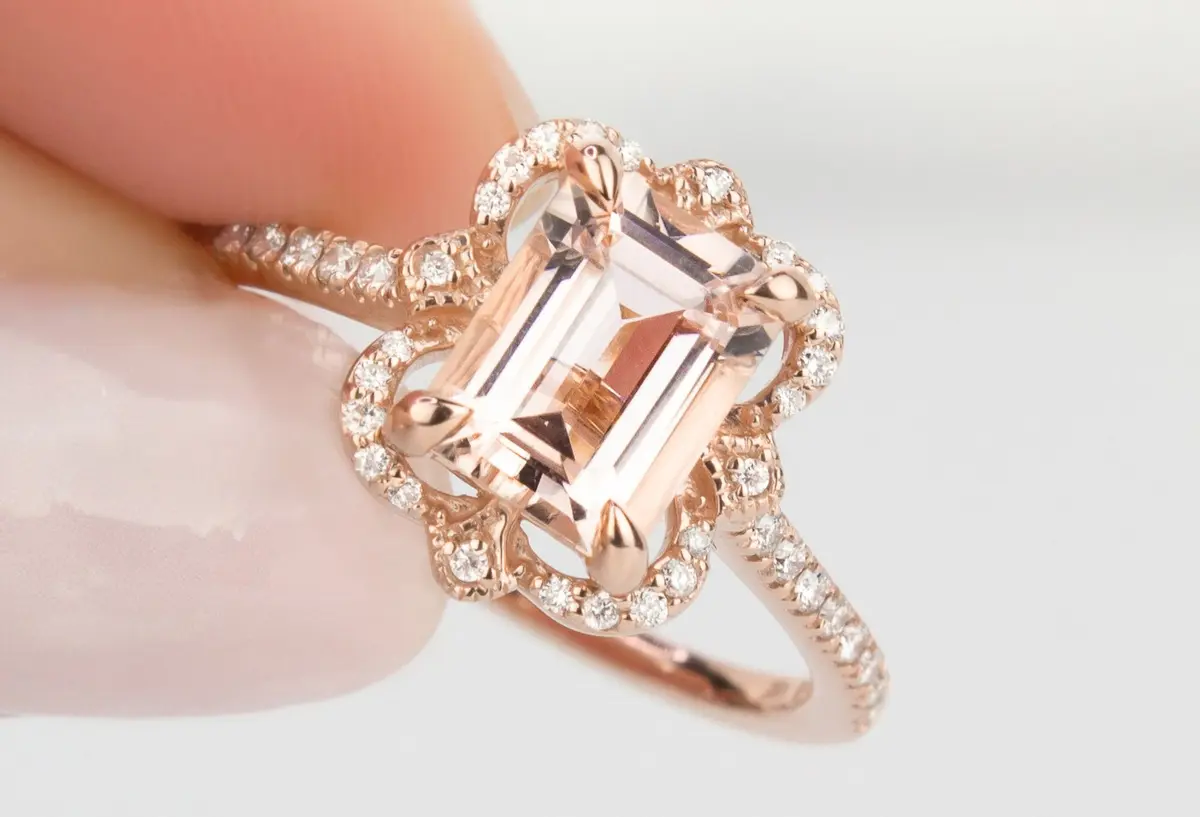
Peach
Peach sapphires are a blend of pink, orange, gold, and yellow and feature a light pastel peach or a slightly more vivid look. Their warm and subtle hue lends itself particularly well to yellow or rose gold settings.
Orange
Orange sapphires get their color from trace elements of iron. They range in color from a yellowish orange to a more reddish orange, and the best versions feature a strong, pure orange to red-orange with a medium tone and vivid saturation.
Purple
Most purple sapphires feature a pure purple as the dominant color or a pinkish purple, though they can also range from medium to dark purple to a more violet purple with weak saturation.
Padparadscha
Padparadschas are an extremely rare color variation of sapphires with a unique mix of pink and orange. They can range from a pastel to a deeper orange-pink. Some say that their blend of color is reminiscent of a sunset, though in the Sanskrit language, padparadscha refers to the rich color of a lotus blossom.
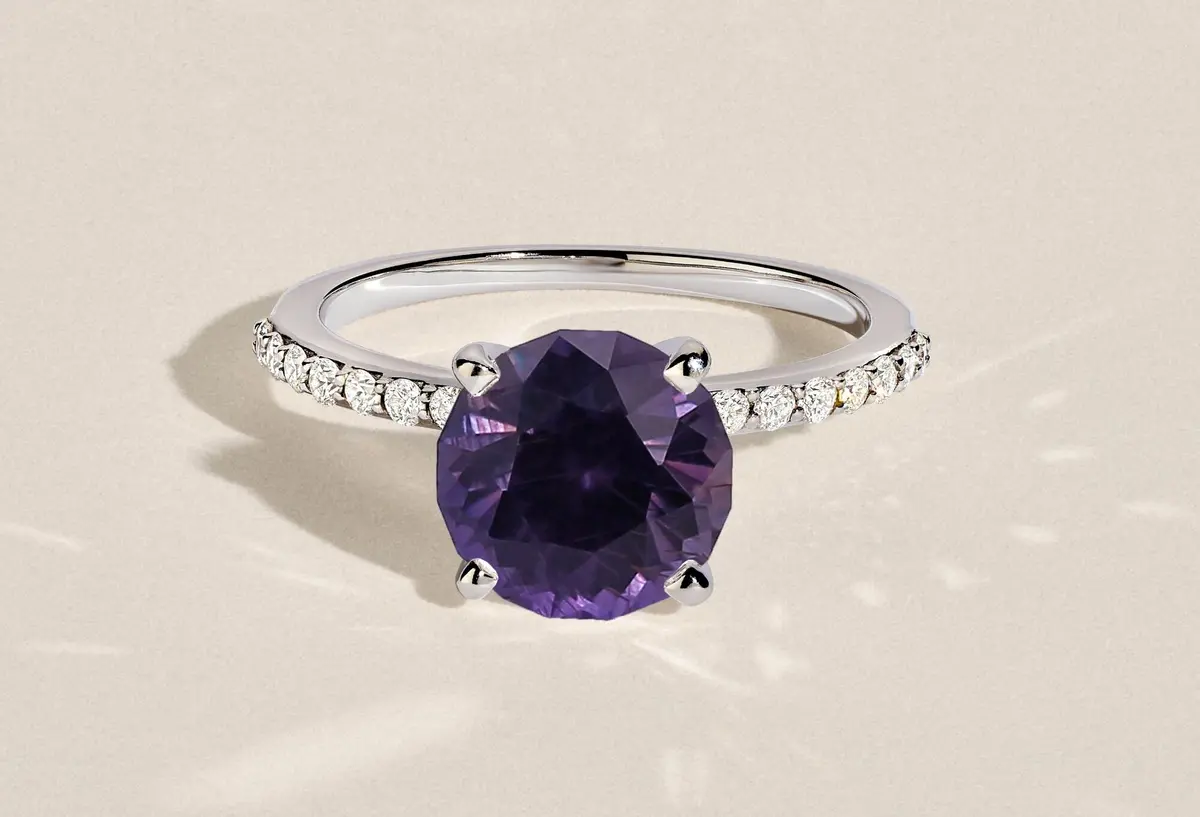
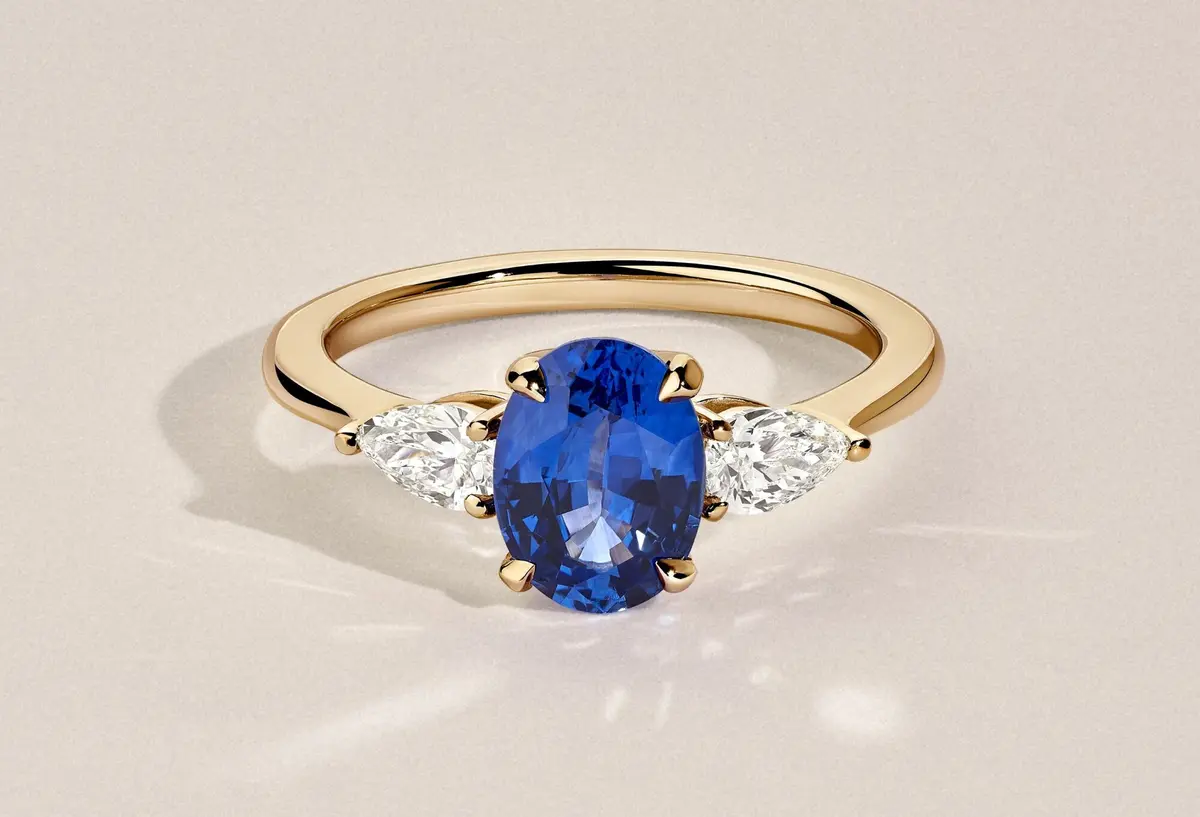
Color Change
Color change sapphires are chameleons as their color shifts under different lighting. In the daylight, they may be a blue to violet hue, while under incandescent light, they may be a violetish purple or reddish purple. These variations are rare and increasingly coveted as a unique alternative to more standard sapphire colors.
Parti and Bi-Color
Parti-colored and bi-colored sapphires show a mix of distinct colors. While other gemstones may shift color in different lighting, these gems feature color zoning (different colors in different places of the gem under the same light), making them very rare and incredibly beautiful.
Sapphire Color Chart
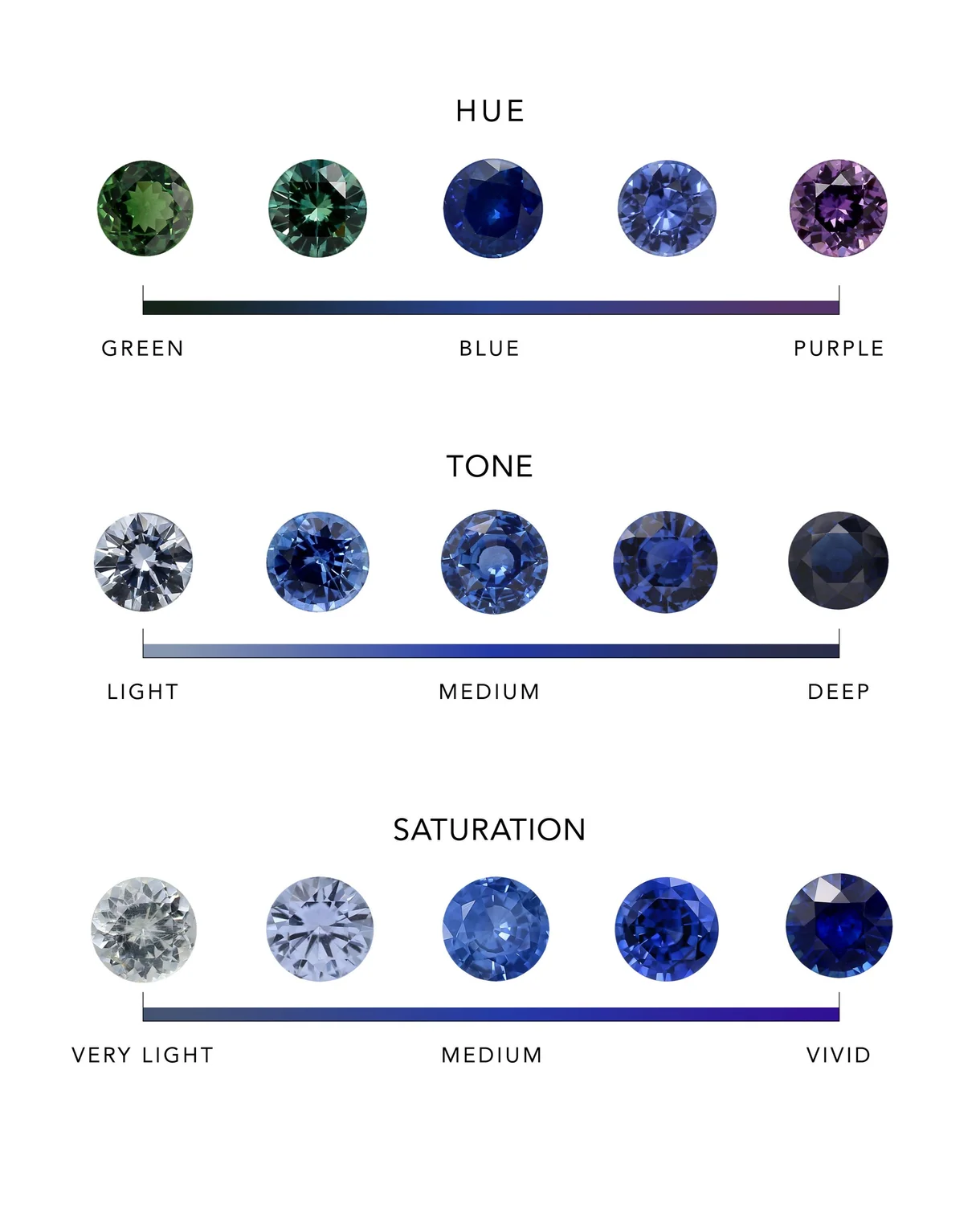
Sapphire Color FAQs
The rarest sapphire color is padparadscha, which features a unique blend of orange and pink.
The most common (and most popular) color of sapphire is medium blue.

